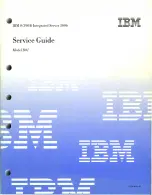
The integer value for bandwidth in the
setqos
command can optionally be followed with:
•
k
or
K
to indicate a multiple of 1000
•
m
or
M
to indicate a multiple of 1,000,000
•
g
or
G
to indicate a multiple of 1,000,000,000
If you specify "none", there is no limit on I/O issue bandwidth rate.
The CLI offers a number of features that are not available in the MC. For example, a QoS rule can
be created with the
setqos
command and be kept inactive by using the
-off
option.
All user-defined rules can be switched off simultaneously by using the
setqos –off vvset:*
command; use the
setqos –on vvset:*
command to enable them again.
Rules can be shown in ordered form by issuing the
showqos –sortcol X,[inc|dec]
, where
X
is the column number, and
inc
and
dec
sort on increasing or decreasing values in the column,
respectively. Column counting in the output of
showqos
starts with the left column, which is
numbered 0.
Figure 18 (page 159)
shows output of the
showqos
command, with the sorting option
set on decreasing IOPS value.
Figure 18
Showqos
Command Output
An option of particular interest for
setqos
is
–vv <name>|<pattern>
. This option changes
the QoS rule, for all VVsets that include VVs with names matching any of the names or patterns
specified, to the value contained in the
setqos
statement. If a VV is in a VVset for which no QoS
rule has yet been defined, a new rule is created with the limits in the setqos command.
The built-in rule
all_others
is switched off by the command
setqos –off sys:all_others
.
The
showqos
and
statqos
command provide a centralized view of the QoS rules in the systems
and how the workloads conform to them.
Executing the QoS CLI commands requires a logon to an account with Super or Edit rights. Any
role granted the qos_set right can set QoS configurations. QoS rules can be scheduled using the
createsched command for automated QoS policy changes for example to adapt to day/night or
weekday/weekend workload conditions.
Another new HP 3PAR CLI command,
srstatqos
, displays historical performance data reports
for the QoS rules. This command is integrated in HP 3PAR System Reporter (SR) on the 3PAR nodes.
SR 3.1 MU1, installed on a separate server, includes statistics on QoS. To learn more about the
QoS information in SR, see the HP 3PAR System Reporter 3.1 Software User's Guide and the HP
3PAR System Reporter 3.1 Software Release Notes.
Removing a QoS Rule
To remove a QoS rule, click the
Clear QoS
option (see the menu in
Figure 11 (page 155)
). Clearing
a QoS rule does not require first disabling the rule.
The
Disable QoS
option deactivates an enabled rule. When the rule for a VVset is disabled, the
Enable QoS
selection (see
Figure 11 (page 155)
) becomes active.
Using HP 3PAR Priority Optimization
159
















































